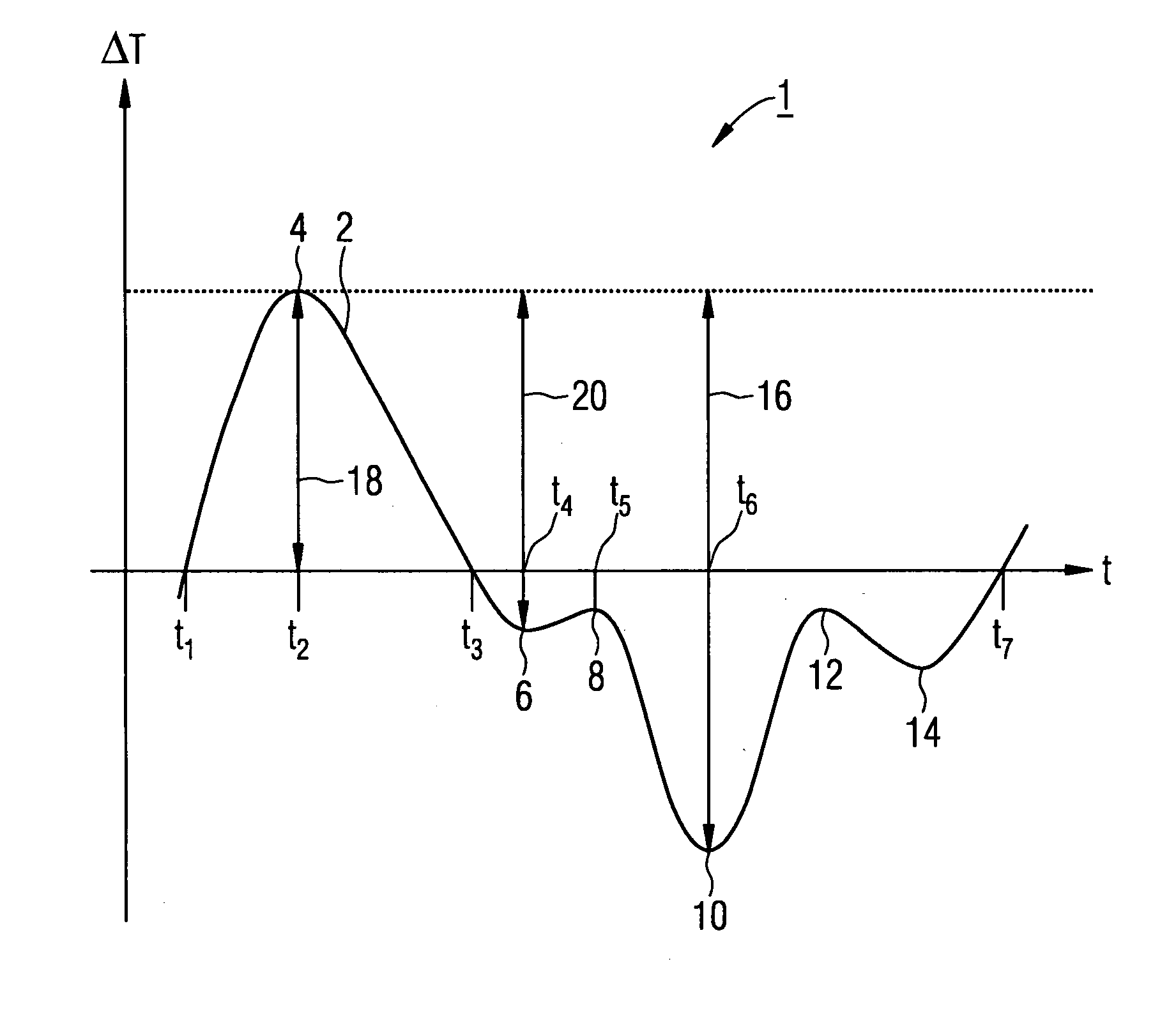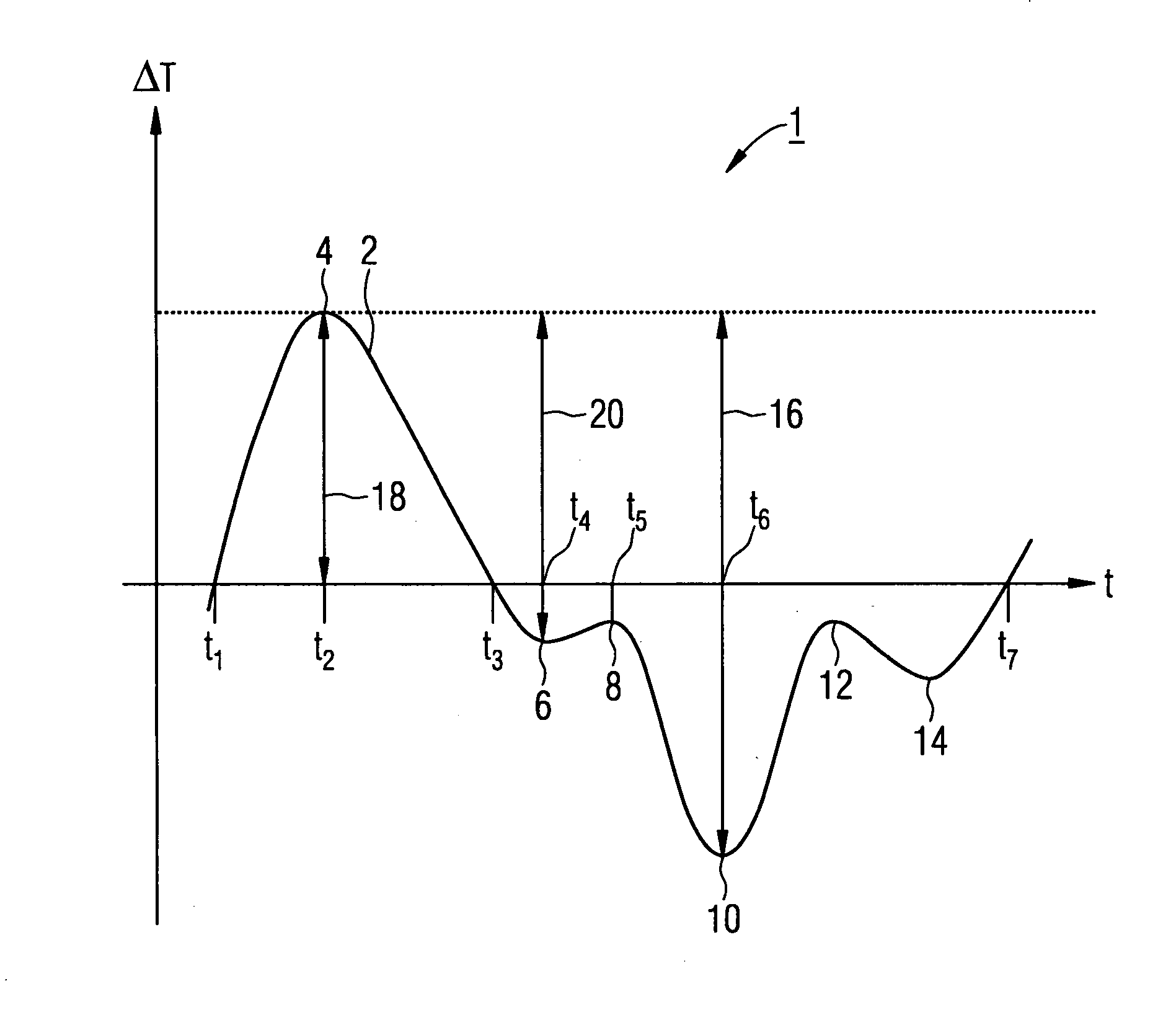Method for Determining a Parameter Characteristic of the Fatigue State of a Part
a technology of fatigue state and parameter characteristic, which is applied in the direction of instruments, nuclear elements, digital computer details, etc., can solve the problems of successive deterioration or detrimental effect on material properties, limited lifetime or future usability of parts, and thermal stresses in parts and thus to direct load on parts
- Summary
- Abstract
- Description
- Claims
- Application Information
AI Technical Summary
Benefits of technology
Problems solved by technology
Method used
Image
Examples
Embodiment Construction
[0018]In the normal operating mode of a steam turbine, in a start or start-up phase, starting from the stationary turbine, there is a successively increasing application of a working medium at high temperature, which leads to the heating up especially of the components in contact with the medium. The heating up of the components directly exposed to the medium, such as the turbine blades for example or other parts directly exposed to medium, occurs in this case initially by a comparatively rapid warming up of the surfaces directly exposed to the medium, which as a result of the thermal inertia, depending on material and construction of the relevant component, especially of the relevant wall strength, propagates more quickly or less quickly into the internal area of the component concerned. In a transitional phase while the steam turbine is starting up, this means that, in a few components, there is a temperature difference between the outer side or surface on the one hand and the int...
PUM
 Login to View More
Login to View More Abstract
Description
Claims
Application Information
 Login to View More
Login to View More - R&D
- Intellectual Property
- Life Sciences
- Materials
- Tech Scout
- Unparalleled Data Quality
- Higher Quality Content
- 60% Fewer Hallucinations
Browse by: Latest US Patents, China's latest patents, Technical Efficacy Thesaurus, Application Domain, Technology Topic, Popular Technical Reports.
© 2025 PatSnap. All rights reserved.Legal|Privacy policy|Modern Slavery Act Transparency Statement|Sitemap|About US| Contact US: help@patsnap.com


